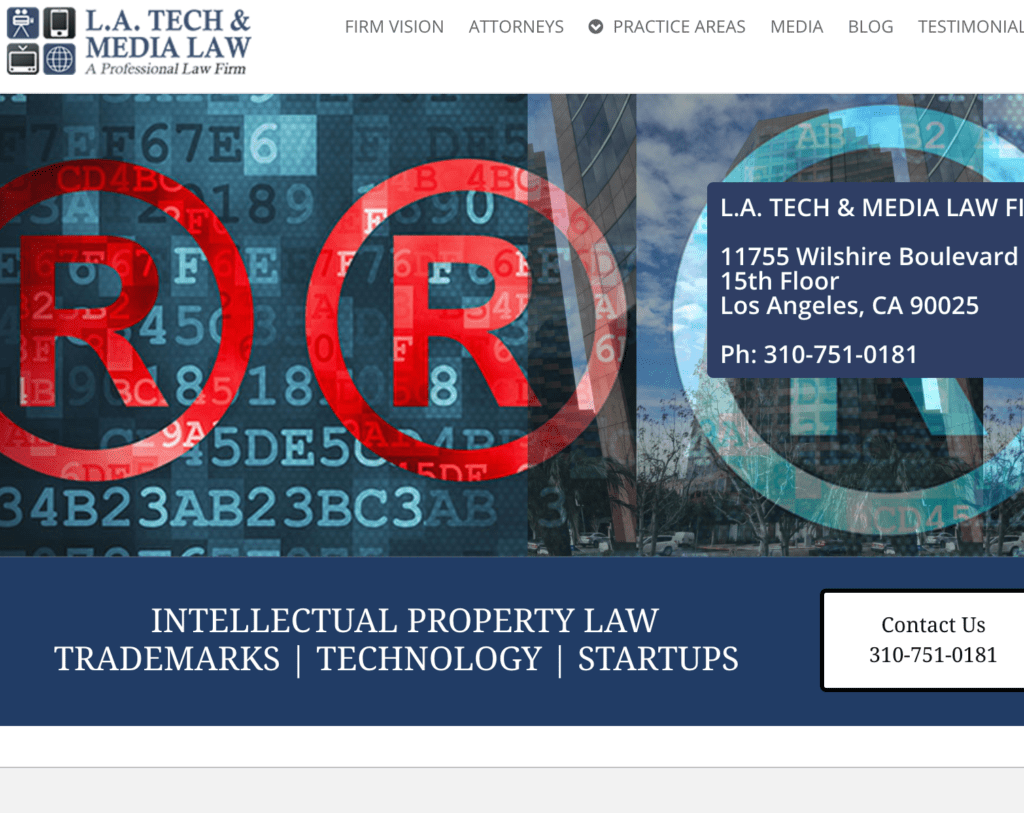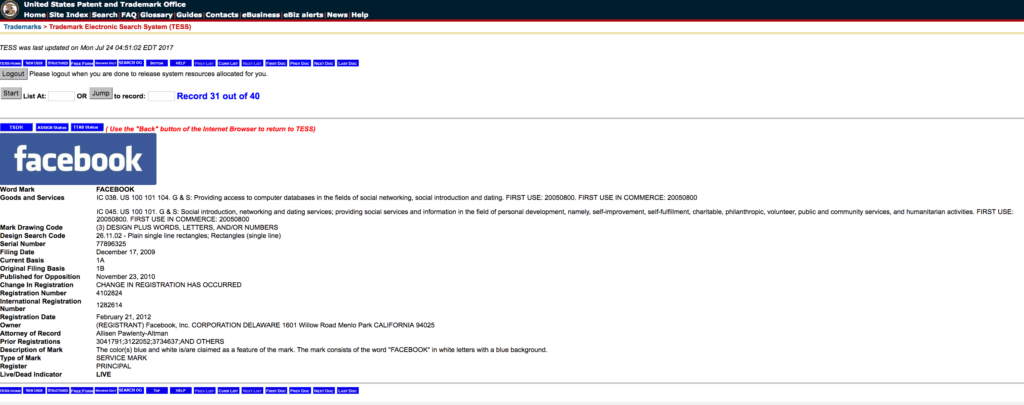During the trademark search and clearance process technology entrepreneurs must evaluate whether a certain trademark, brand, or logo may infringe with an existing trademark in the same industry. For example, if an entrepreneur, tech startup, or mobile application developer was seeking to launch an app in the field of social networking and call it, “FACEBOOX”, that may cause a conflict with the registered trademark FACEBOOK® (U.S. Reg. No. 3814888) filed in International Class 042 for “providing temporary use of non-downloadable software applications for video sharing”. One issue often considered is, since FACEBOOX and FACEBOOK® are spelled differently, but there is still a likelihood of confusion between these trademarks, where is the line drawn in trademark infringement analysis?
Trademark Search and Conflict Analysis for Startups:
The central element of trademark infringement is the legal test of likelihood of confusion which is designed to analyze and evaluate whether similarities in two trademarks are likely to confuse customers about the source of the products. GoTo.com, Inc. v. The Walt Disney Company, 202 F.3d (2000).
In California district courts, the following factors are most relevant to likelihood of confusion analysis:
(1) strength of the mark,
(2) proximity of the goods or services,
(3) similarity of the marks,
(4) evidence of actual confusion,
(5) the marketing channels used,
(6) the type of goods or services and the degree of care likely to be
exercised by the purchasers of the defendant’s Product,
(7) defendant’s intent in selecting the mark, and
(8) the likelihood of expansion of the product lines.
AMF, Inc. v. Sleekcraft Boats, 599 F.2d 341(9th Cir. 1979).
Generally, the most important factors are the proximity of the goods or services, and, the similarity of the trademarks. For example, if the trademarks are highly similar in sound, spelling, appearance, or meaning, then the goods and services should be more distinct, and outside each other’s natural zone of expansion to avoid a likelihood of confusion. On the other hand, if the goods and services provided under each trademark in an infringement analysis are very different, then a higher degree of similarity between two trademarks may withstand scrutiny under likelihood of confusion grounds. Traditionally, courts do not focus on technicalities or nuances and analyze likelihood of confusion cases based on a totality of circumstances approach, with no single factor treated as determinative for trademark infringement purposes.
Entrepreneurs, mobile application startups, and innovation teams thinking about brand name adoption and protection are wise to focus on the forest rather than the trees. When conducting a trademark search and clearance report, conflict check, or otherwise ascertaining the legal landscape and options for protection of a business name, application name, brand or logo, startups, entrepreneurs inherently want a distinct trademark that is legally protectable, and does not create a likelihood of confusion with existing brand, logos, or slogans. Through consultation with the best trademark and technology attorneys they can find, startups and entrepreneurs can approach their branding search and clearance process with an informed perspective on the where the line is drawn on likelihood of confusion for their specific trademark, brand, or logo, and for their specific industry and natural zone of expansion.

The content above is a discussion of legal issues and general information; it does not constitute legal advice and should not be used as such without seeking professional legal counsel. Reading the content above does not create an attorney-client relationship. All trademarks are the property of L.A. Tech & Media Law Firm or their respective owners. Copyright 2017. All rights reserved.



